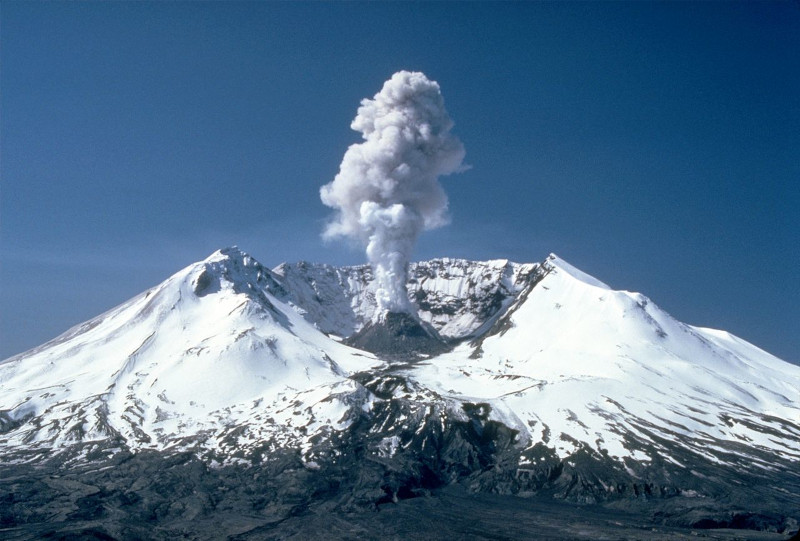Scientists Are Giving LAST WARNING As Mount St. Helens Is On The Brink of Eruption After 44 Years!

**Scientists’ Final Warning: Mount St. Helens Could Erupt After 44 Years of Silence**
Mount St. Helens has been attracting scientific attention after experiencing nearly 350 earthquakes in the past few months. Geologists say this is a sign that the volcano is entering a “recharge” phase – a process of magma accumulating underground that could lead to a future eruption.
The last time Mount St. Helens erupted was on May 18, 1980 – a cataclysmic event that flattened 230 square miles of forest, sent an ash cloud 15 miles high, and changed the landscape of the Northwest.
The eruption began with mild tremors, followed by steam explosions and the appearance of a large bulge on the mountainside pushed up by the magma. A magnitude 5.1 earthquake triggered the largest landslide on record, followed by a devastating horizontal explosion.
Now, worrying signs are returning: small earthquakes – called cluster earthquakes – are increasing in both number and frequency. Satellite images show ground deformation, while CO₂ and SO₂ levels are rising around the crater – a clear sign that magma is rising near the surface.
While scientists can’t say for sure that an eruption is imminent, they are closely monitoring these changes. The magma charging phase can last for years, even decades, and doesn’t necessarily lead to an eruption. Still, the current activity is a reminder that Mount St. Helens is still a living, dynamic volcano.

If another eruption were to occur, the consequences would be dire: from ash rising high into the atmosphere to lava flows (lahars) pouring down valleys, threatening communities and the natural environment. The forests that had regenerated after the 1980 eruption could be destroyed again, and wildlife and ecosystems would face devastation.
However, the remarkable recovery story after 1980 shows the resilience of nature. Just months after the eruption, plants such as lupines began to grow again.
The marsupial mole played a key role in improving the soil, creating conditions for other species to thrive. Gradually, forests, animals and streams revived, transforming the grey ashland into a vibrant ecosystem.
Comparisons with tropical volcanoes such as Tambora in Indonesia – where the most powerful eruption in history occurred in 1815 – further demonstrate the resilience of nature. Although the initial damage was severe, the humid climate and high biodiversity allowed the area to quickly become covered in dense forest, becoming a symbol of the remarkable regenerative capacity of tropical ecosystems.
From both Mount St. Helens and Tambora, scientists have learned important lessons about disaster recovery: the role of biodiversity, climate conditions, and the presence of keystone species in ecosystems.
This understanding will not only help prepare for future eruptions, but will also contribute to global environmental restoration efforts.








